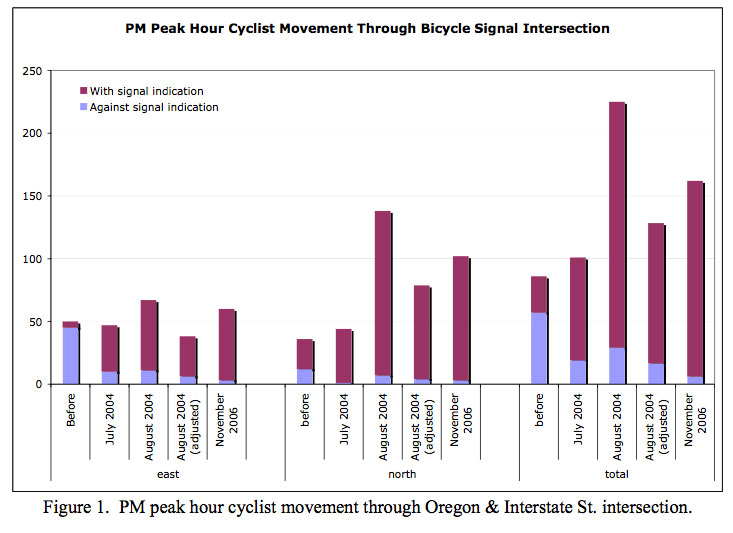The above chart comes from this 2006 study by Portland State University about redesigning a traffic signal to accommodate (and even prioritize) bicycles by offering them a unique “bicycle scramble signal.” The before picture shows most bicyclists “breaking the law” (the part of the chart in light purple). The after picture shows the reverse.
Here’s the conclusion from the report (linked above):
The study of this unique intersection shows how creativity and working with the community can produce a positive change for motorists and bicycle users alike. The project has effectively improved traffic conditions as well as the safety for cyclists that use this intersection. After data collection and analysis, the study has been able to deduce a few points about this unique way of handling high volumes of bike traffic. The usage of the scramble signal at N Interstate and Oregon by bicyclists has increased to more than double the volume in a little over two years. The amount of illegal crossings that go against or do not use the signal indication have significantly decreased. It appears that cyclists may take other routes into downtown during peak morning hours as scramble usage in the evening commute is significantly higher. This agrees with the signal design, which would aid in cyclists leaving downtown and with destinations to the north and east. The implementation of the scramble signal has been successful as safe and legal usage has been improved for a high cyclist volume intersection.
My take on this is that if intersections are designed only for cars, bicyclists break the law. Once you design intersections so that they actually make sense for bicyclists, almost everyone follows the rules. It’s common sense, really. The same logic applies to long wait times and jaywalking, and speed limits and design speeds for drivers.
